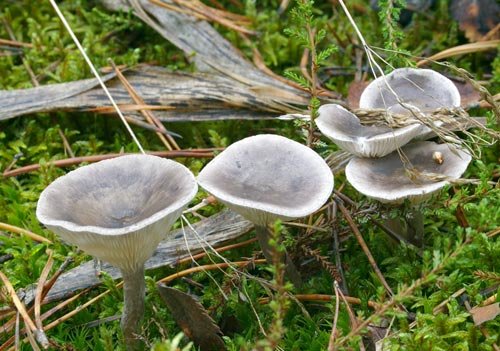Humpback chanterelle (Cantharellula umbonata)
- Division: Basidiomycota (Basidiomycetes)
- Subdivision: Agaricomycotina (Agaricomycetes)
- Class: Agaricomycetes (Agaricomycetes)
- Subclass: Agaricomycetidae (Agaricomycetes)
- Order: Agaricales (Agaric or Lamellar)
- Family: Tricholomataceae (Tricholomovye or Ryadovkovye)
- Genus: Cantharellula (Cantarellula)
- Type: Cantharellula umbonata (Humpback chanterelle)
- Cantarellula tubercle
- Chanterelle false convex
- cantarellula

Chanterelle humpback, or Cantarellula tubercle (lat. Cantharellula umbonata) is a conditionally edible mushroom of the genus Cantharellula.
Hat:
Small (2-5 cm in diameter), in young mushrooms of an interesting T-shape, as it grows, it becomes funnel-shaped with a sharp central tubercle and slightly wavy edges. Color – grayish-gray, with blue, pigmentation is blurred, uneven, in general, the color in the center is darker than at the edges. The flesh is thin, grayish, slightly reddens at the break.
Records:
Frequent, branched, deeply descending on the stem, almost white in young mushrooms, turning gray with age.
Spore powder: White.
Leg:
Height 3-6 cm, thickness up to 0,5 cm, cylindrical, straight or slightly curved, grayish, with pubescence in the lower part.
Cantharellula umbonata is found, and quite abundantly, in coniferous and mixed forests, in mossy places, from mid-August until the onset of cold weather.
The characteristic shape, reddening flesh, frequent branched gray plates allow you to confidently distinguish the humpback fox from most of its relatives.
The mushroom is edible, but not particularly interesting in a culinary sense, firstly, because of its small size, and secondly, because it is not very tasty.









